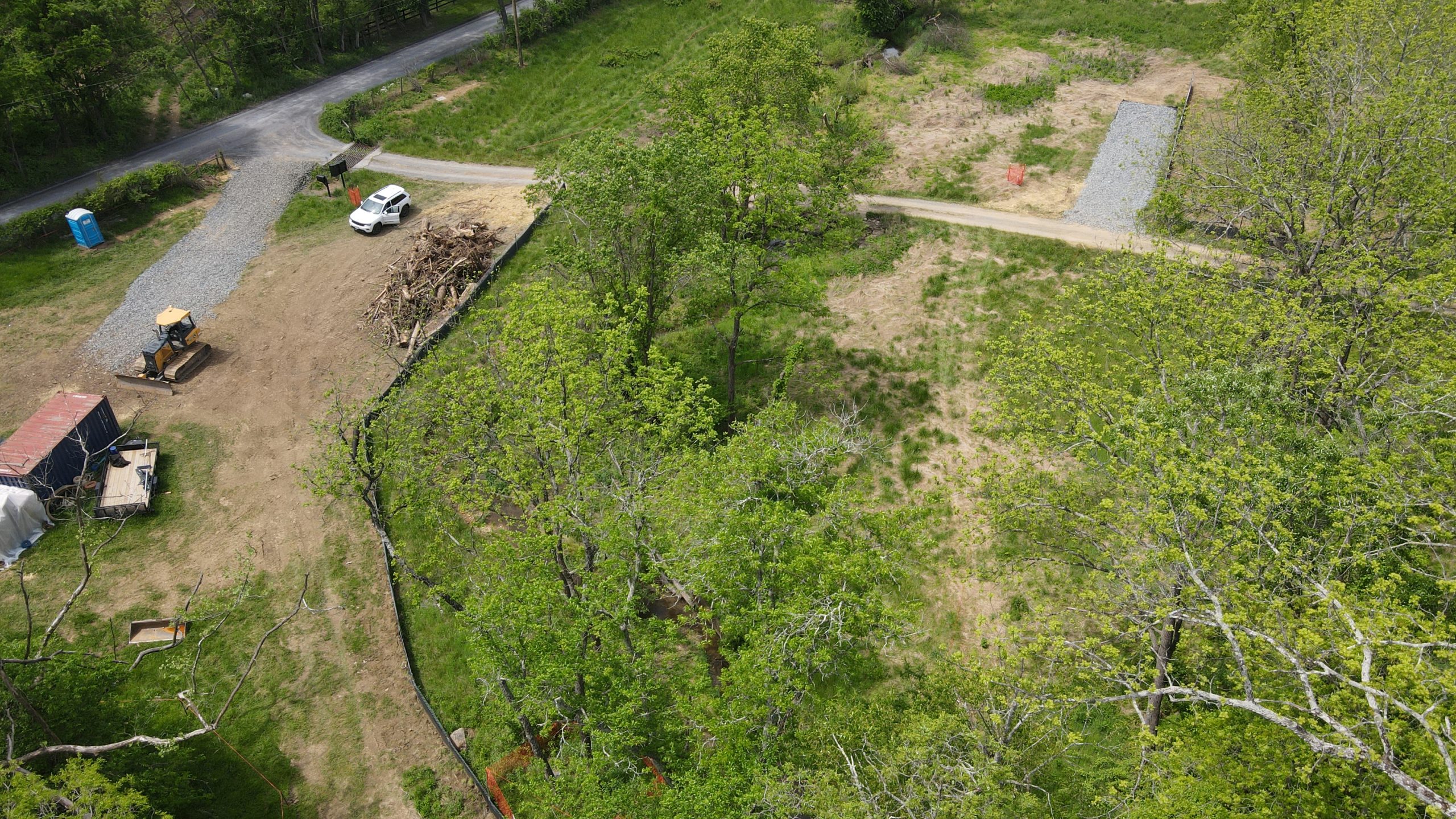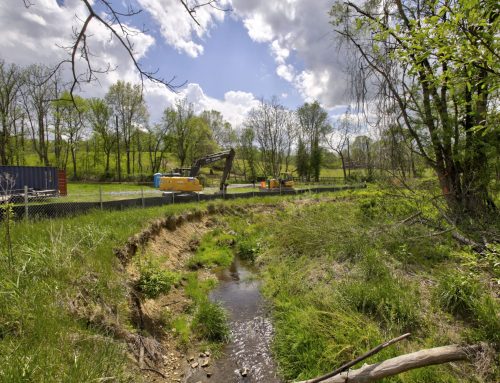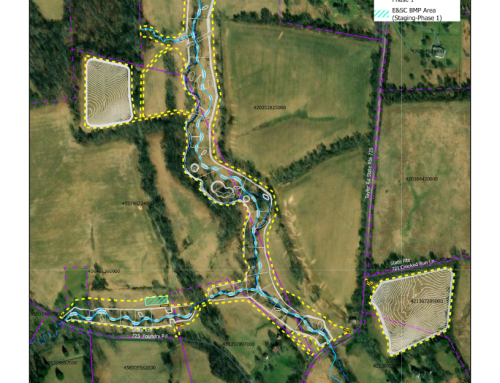During Phase I of the Coolbrook Restoration Project, the Construction/Implementation phase involves mobilizing heavy equipment and skilled crews to begin building the designed stream restoration features. Crews install grade control structures to manage flow and reduce erosion, regrade and stabilize streambanks to restore natural channel form, and establish native riparian plantings to support long-term ecological health. Throughout the process, best management practices for sediment and erosion control are strictly followed to protect downstream water quality and ensure regulatory compliance.
So far, we’ve restored 700 feet of stream along a small tributary. As part of the project, we’re removing polluted soil to uncover buried wetlands. We’re also reshaping the stream to include a mix of shallow, fast-moving areas and deeper, slower ones. During storms, water will naturally spill over the banks and flow into the wetlands, where it can slow down and be cleaned of excess nutrients. We’re adding brush and other natural materials to the stream to create habitats for fish, birds, and other wildlife. To protect the new streambanks, we’ve placed coconut fiber mats until we can plant native trees, shrubs, and grasses.
















